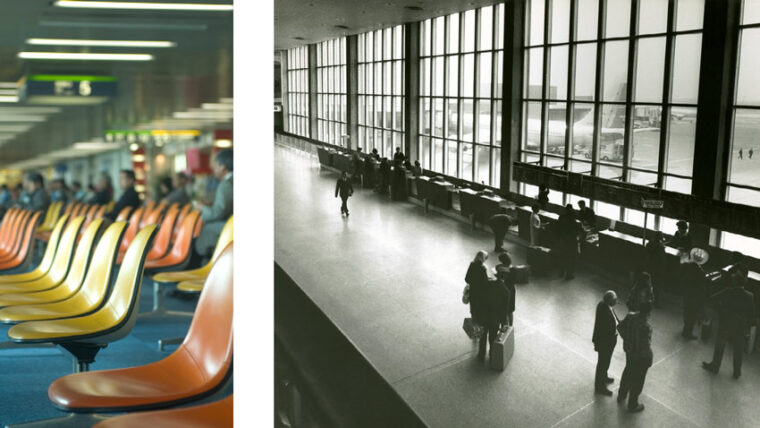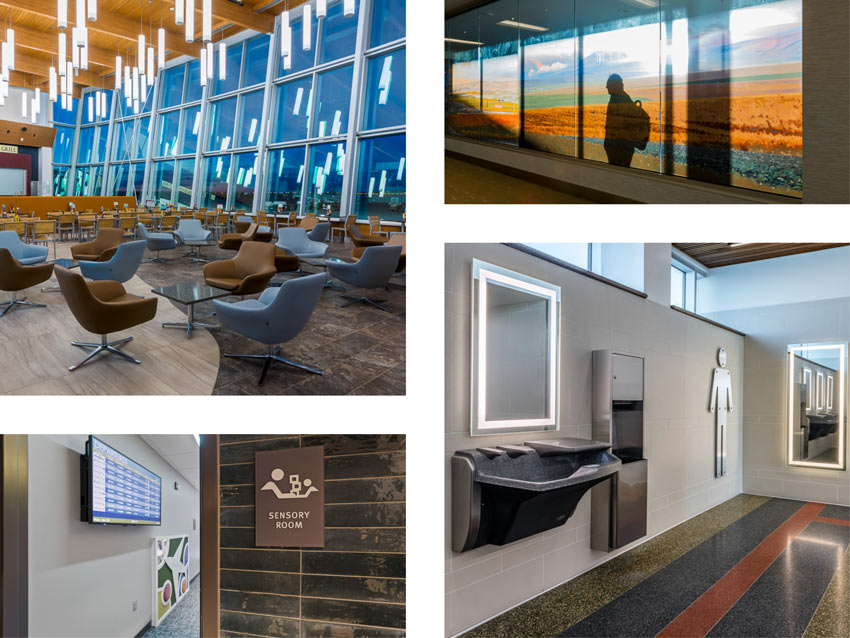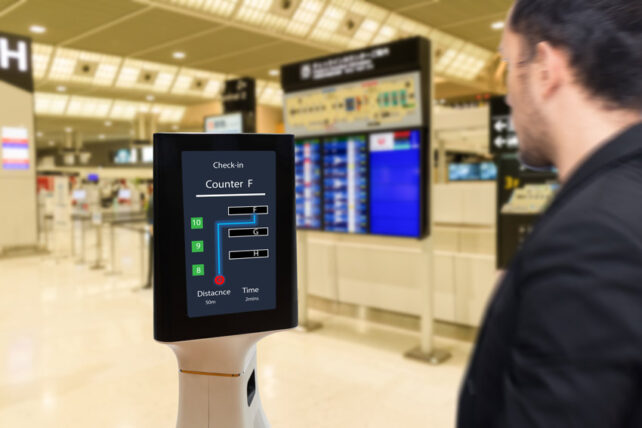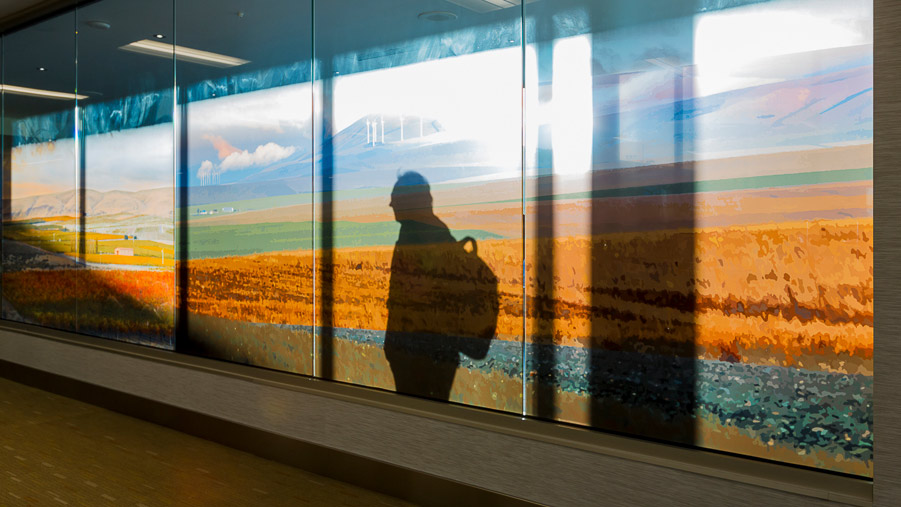The aviation industry has experienced dynamic changes in recent years due to world events, terrorism, social changes, a pandemic, technology advancements, economic factors, customer demands, and passenger growth. They have had to adjust, recover, and move forward to maintain their schedules, budgets, and services, all while being impacted by these events. In response, interior designers have been proactively collaborating with engineers, architects, lighting designers, contractors, airlines and airport directors, and support staff to see that airport interiors consistently meet the needs of the customers.
Past Trends and How They Shaped Us
It’s interesting to realize that in 1930, only 6,000 of us flew commercially. By the early 1940s, flying as an accepted form of transportation took off, with numbers approaching just over one million. Due to improvements in aircraft construction and distance capabilities, traveling to once hard-to-reach locations became a reality for many. In response, airports with customer wait areas and conveniences started to sprout up across the landscape.

In the early days of commercial flight, seating comfort, lighting, and amenities were not on the forefront of design considerations as compared to today. A one-size-fits-all approach was prevalent. Gate hold areas were not designed with long waits in mind as passengers could time their arrival to get to the airport just before take-off and hop directly onto the plane. It wasn’t until the early 70s that screening devices were implemented, consisting of simple metal detectors and X-Ray machines. It is hard to fathom, but family members and friends could see you off at the gate itself without any identification. Gate hold areas, or lounges, were mainly generic and bathed in earth tones, and fluorescent and incandescent lighting.
Flying was also perceived as a luxurious experience saved primarily for the adventure seeker and business traveler as tickets were expensive and routes were limited. After deregulation of ticket prices in the late 70s, and with the growth of budget-friendly airlines, the ability to choose commercial flight as an option became more affordable for many with many more travel destination options being offered. As a result, demand for commercial flights increased quickly, leading airports to realize the need for more space and improved technologies to better serve their customers.
The addition of Americans with Disabilities Act (ADA) regulations led airports to cater to a more diverse customer base. This has also impacted building access and interiors in significant ways, with improved ramp, wayfinding, materiality, circulation, lighting, fixture and furnishing design.
Current Trends in Airport Interiors
For those of us who remember waiting for dial-up access to the internet to connect, it is wonderful to know that at almost every airport, you can log onto free Wi-Fi within minutes. Powered seats, power tables, apps that keep us updated with text alerts, and digital flight information displays (FIDS) that alert us to the status of multiple flights live on monitors in real time are commonplace features that many of us take for granted. Today, the average passenger travels with an average of three electronic devices and this number is expected to continue to rise.

Since the 1990s we have seen an increase of 300% in commercial flights alone. “2018 saw 8.8 billion fliers; in 2040, that number is expected to jump to 19.7 billion fliers,” according to Airports Council International (ACI). Traditional approaches of separating hold areas from retail and concession services, and focusing on achieving maximum seating capacity, for instance, have shifted towards recognizing the need to open sight lines to available amenities, improving foot traffic circulation, and providing more flexible seating options. Airports are recognizing the importance of providing multiple ranges of goods and services to their customers, as well as additional seating and comfort options.
Once viewed as utilitarian, lighting is now taking a much larger role in successful interior design using timers, lighting and color controls, lamp types, mixed temperatures, and aesthetics. Lighting has even played a significant role in contributing to healthier living environments, with specific types able to kill harmful viruses, including COVID.
Providing an equitable and inclusive environment is something we are seeing more and more of in practice. Recognizing the need to treat customers as individuals and respect their backgrounds and personal needs is becoming more widely accepted and being put into practice within the interior.
Along with ADA requirements, ancillary spaces such as Service Animal Relief Areas (SARAs), Sensory, Lactation, Multi-Faith and Wellness Rooms are increasingly being provided. Each of these spaces is specifically designed to support various conditions to enhance a passenger’s experience. A Lactation or Mother’s Room, for instance, provides a clean, quiet, and relaxing private area to feed an infant who may need to be nursed or bottle fed. This room should include a comfortable chair, side table, sink, soap dispenser, towel dispenser, and countertop within a calming color palette. These and SARAs are FAA-regulated spaces.
The demand for incorporating sustainable methods continues to be recognized as essential and will continue to play a major role in airport interior design. Today we are seeing increasing demand and knowledge of the benefit for incorporating healthy materials, finishes, biophilia, natural lighting, and smart-technology fixtures as standard practice.
Future Trends and the Human Experience
Arguably, advances in technology and sustainability will have the most impact on future travel. Statistics show that it is highly likely that less human interaction will be needed to book your ticket, check your baggage, go through security, pay for concessions, and even navigate the airport itself. Artificial Intelligence (AI) will be used to better inform airlines and passengers of choices in case flight delays and cancellations. Apps will also continue to impact air travel and will become more focused on improving the customer experience and access to custom amenities.

Passengers will continue to demand more customized services, flexible seating options, sustainability improvements, greater access to new technology, lower wait times, and improved interior finishes. Airports will, in respect to budgetary considerations, want a more timeless approach to the aesthetic and materials that drive a lower maintenance cost, as well more advanced energy-efficiency solutions. Attracting customers will remain a priority and competition will continue to grow among airports. Interiors will reflect these new considerations and will focus on providing the customer with unique and customized design solutions that meets the needs of the individual while supporting the airport’s need for sustained revenue.



